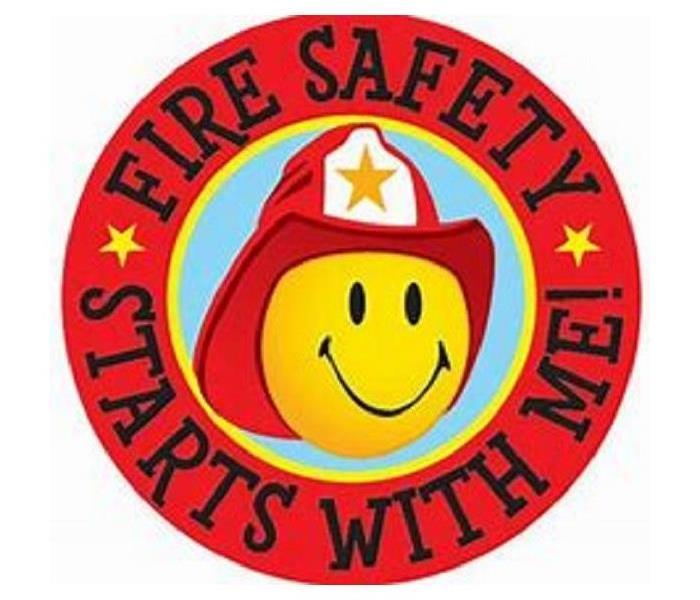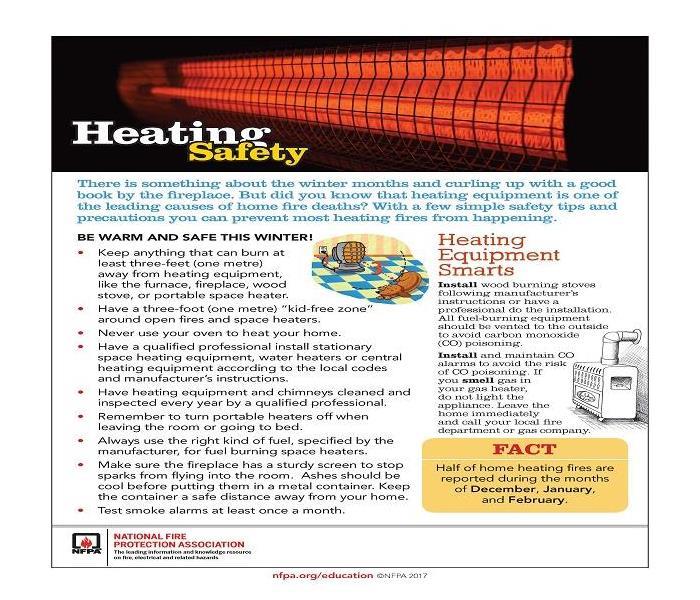Recent Fire Damage Posts
The Do's And Don'ts of Fire Damage Restoration | SERVPRO of Fenton/South Ballwin
9/26/2023 (Permalink)
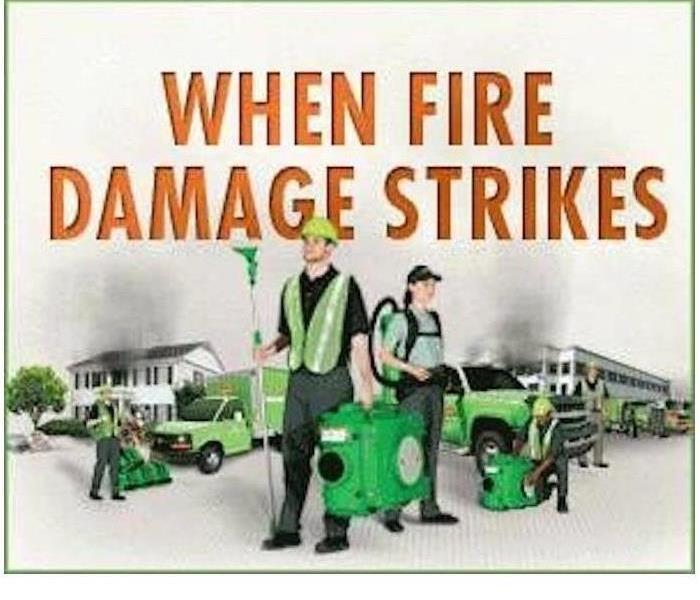 SERVPRO of Fenton/South Ballwin is your trusted choice for fire damage restoration in Fenton and South Ballwin, Missouri
SERVPRO of Fenton/South Ballwin is your trusted choice for fire damage restoration in Fenton and South Ballwin, Missouri
Fire damage in your home or business is a devastating event that leaves behind not only physical destruction but also emotional turmoil.
When the flames are extinguished, and the smoke clears, the path to recovery begins with fire damage restoration. In this extensive guide, we will delve into the do's and don'ts of fire damage repair and restoration. Whether you're dealing with fire damage, smoke damage, soot cleanup, or smoke odor removal, this comprehensive resource will equip you with the knowledge to make informed decisions and protect your Fenton or South Ballwin, Missouri property.
The Do's of Fire Damage Restoration
1. Do Contact Professionals Immediately: As soon as the fire is extinguished and authorities declare it safe to enter the premises, reach out to a reputable fire damage restoration company like SERVPRO of Fenton/South Ballwin. Swift action can mitigate further damage and reduce restoration costs.
2. Do Prioritize Safety: Safety should always be your top concern. Do not enter the fire-damaged property until authorities confirm it's safe. Once inside, exercise caution due to potential structural instability, electrical hazards, and toxic soot and smoke residue.
3. Do Document the Damage: Take photographs and videos of the fire damage for insurance purposes. Visual evidence is invaluable and can expedite the claims process, ensuring you receive the compensation you deserve.
4. Do Secure the Property: If authorities allow you to enter, secure the property to prevent unauthorized access, potential theft, or vandalism.
5. Do Notify Your Insurance Company: Notify your insurance company promptly to initiate the claims process. SERVPRO of Fenton/South Ballwin can collaborate directly with your insurance provider to streamline the restoration process.
6. Do Address Water Damage: Firefighting efforts often lead to water damage. It's crucial to address this issue promptly to prevent mold growth and further structural damage.
7. Do Allow Professionals to Assess Smoke Damage: Smoke and soot can cause extensive damage beyond what's visible. Allow professionals like SERVPRO of Fenton/South Ballwin to assess the full extent of the smoke damage and develop a comprehensive restoration plan.
8. Do Secure Temporary Shelter: If your home is uninhabitable, secure temporary shelter for yourself and your family. Your safety and well-being should remain a top priority throughout the restoration process.
The Don'ts of Fire Damage Restoration
1. Don't Attempt DIY Cleanup: Fire damage restoration is a complex process requiring specialized knowledge and equipment. Attempting do it yourself cleanup can exacerbate the damage and pose safety risks.
2. Don't Discard Valuables Prematurely: Avoid disposing of damaged items without consulting professionals. SERVPRO of Fenton/South Ballwin's fire damage restoration services emphasize content cleaning and restoration, potentially salvaging items you thought were lost.
3. Don't Overlook Smoke Odor: Smoke odor can persist long after the fire is extinguished. Neglecting smoke odor removal can compromise indoor air quality and your comfort in the restored space.
4. Don't Delay Restoration: Time is of the essence in fire damage restoration. Delaying the process can lead to further damage, increased restoration costs, and potential health hazards due to mold and soot exposure.
5. Don't Skip Professional Assessment: Even if visible damage appears minimal, do not skip a professional assessment. Smoke and soot can infiltrate hidden spaces, jeopardizing the structural integrity of your property.
6. Don't Assume Items Are Unsalvageable: Fire-damaged belongings may appear beyond repair, but professional restoration experts have the knowledge and techniques to salvage many items, including sentimental possessions.
Why Choose SERVPRO of Fenton/South Ballwin for Fire Damage Restoration
SERVPRO of Fenton/South Ballwin is the undisputed choice for fire damage restoration for a multitude of reasons, including:
Experience and Expertise: With years of experience, SERVPRO of Fenton/South Ballwin's technicians are highly trained in fire damage restoration, smoke odor removal, soot cleanup, and more.
Advanced Equipment: SERVPRO employs state-of-the-art equipment and techniques for a thorough and efficient restoration process.
Comprehensive Services: From water damage mitigation to content cleaning and restoration, SERVPRO offers a complete range of fire damage restoration services.
24/7 Emergency Response: Fires can occur at any time. SERVPRO of Fenton/South Ballwin provides round-the-clock emergency response to address your immediate needs.
Insurance Collaboration: SERVPRO works closely with insurance companies to expedite claims processing, easing the burden on you during this challenging time.
Community Commitment: SERVPRO of Fenton/South Ballwin is not just a restoration company; it is a part of the Fenton and South Ballwin, Missouri community. They understand the unique needs of local residents and businesses.
Reputation for Excellence: SERVPRO of Fenton/South Ballwin has built a strong reputation for delivering exceptional service and results. Their commitment to customer satisfaction sets them apart.
The Road to Recovery
While fire damage can be emotionally and physically devastating, it's essential to remember that recovery is possible. With the right professionals by your side, your property can be restored to its pre-fire condition, and your life can regain a sense of normalcy.
Assessment and Planning: The fire damage restoration process typically begins with a comprehensive assessment of the damage and the development of a restoration plan. SERVPRO of Fenton/South Ballwin's experts will work closely with you to ensure your needs are met.
Content Cleaning and Restoration: Professional restoration companies like SERVPRO of Fenton/South Ballwin have advanced techniques for cleaning and restoring your belongings. Many items you thought were lost can be salvaged.
Structural Repairs: Extensive structural damage may require repairs and reconstruction. Experienced restoration teams can handle everything from minor repairs to major renovations.
Smoke Odor Removal: Smoke odor can linger long after the fire is extinguished. SERVPRO of Fenton/South Ballwin employs specialized techniques and equipment to eliminate smoke odors, ensuring your space is comfortable and odor-free.
Thorough Cleaning: Every surface affected by fire and smoke damage will be meticulously cleaned to remove soot and residues. This includes walls, ceilings, floors, and personal belongings.
Restoring Indoor Air Quality: High-efficiency particulate air (HEPA) filtration systems and air scrubbers may be used to improve indoor air quality, removing particles and odors caused by the fire.
Rebuilding and Reconstruction: Once the restoration is complete, SERVPRO of Fenton/South Ballwin can handle any necessary reconstruction to return your property to its pre-fire condition.
Preventing Future Fire Damage
After successfully restoring your property from fire damage, it's imperative to implement preventive measures to reduce the risk of future fires. Here are some strategies to maintain a fire-resistant environment:
Install Smoke Alarms: Ensure smoke alarms are installed on every level of your property and test them regularly.
Fire Extinguishers: Have fire extinguishers readily accessible in key areas, and educate occupants on their use.
Electrical Safety: Regularly inspect electrical systems for faults or signs of wear. Avoid overloading circuits and ensure safe usage of extension cords.
Kitchen Safety: Exercise caution when cooking, and never leave cooking unattended. Keep flammable items away from stovetops.
Proper Storage: Store flammable materials, chemicals, and fuels in safe, designated areas away from potential ignition sources.
Chimney and Fireplace Maintenance: If you have a fireplace or wood-burning stove, ensure they are properly maintained and cleaned regularly.
Moving Forward with Confidence
Once the fire damage restoration process is complete and your property is returned to its pre-fire condition, it's time to move forward with confidence. While the experience may have been harrowing, it can also serve as a catalyst for positive change. Here are some ways to embrace a brighter future:
Fire Safety Education: Use your experience as an opportunity to educate yourself and others about fire safety. Share your knowledge with friends, family, and neighbors to prevent future incidents.
Emergency Preparedness: Develop an emergency plan for your family or business, including evacuation routes, communication strategies, and emergency contacts.
Community Involvement: Consider becoming involved in community organizations or activities related to fire safety and recovery support. Your experience can be a valuable asset to others facing similar challenges.
Conclusion
While the aftermath of a fire can be emotionally and physically overwhelming, it's essential to remember that recovery is possible. The dos and don'ts of fire damage restoration provide a roadmap to navigate this challenging journey, and choosing the right professionals like SERVPRO of Fenton/South Ballwin can make all the difference.
SERVPRO of Fenton/South Ballwin not only possesses the experience, expertise, and state-of-the-art equipment needed for effective fire damage restoration but also understands the emotional toll such events can take on individuals and communities. Their commitment to customer satisfaction, collaboration with insurance companies, and dedication to community involvement make them the preferred choice for fire restoration services.
SERVPRO of Fenton/South Ballwin is here to help with your fire damage restoration needs. We have 24/7 emergency services and are always available when you need us. Call us any time at( 636) 527-5990.
We Are Ready if Fire Damage Strikes | SERVPRO of Fenton/South Ballwin
5/25/2023 (Permalink)
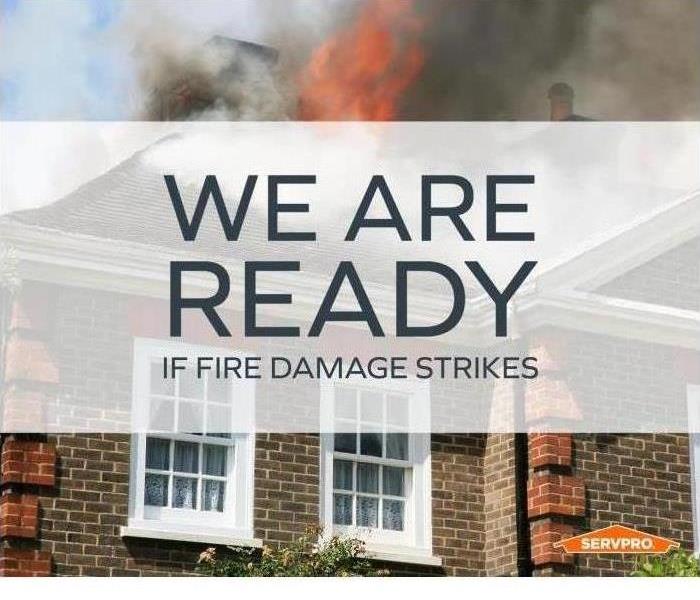 Our team is ready to serve businesses and families in the Fenton/South Ballwin area.
Our team is ready to serve businesses and families in the Fenton/South Ballwin area.
While cases where fire consumes an entire home in the Fenton/South Ballwin area, there are many times in which the fire damage is minor. However, soot and smoke can damage the entire home, making even a small fire a disaster. You may feel hopeless and without options, but that’s not the case.
Involving a professional is the best way to reduce costs and prevent secondary damage. Depending on the type of fire, and the way it is fueled, may require different techniques. SERVPRO of Fenton/South Ballwin is IICRC certified and has the experience to tackle difficult problems. The level and type of damage will likely require a unique response.
Minor damages typically involve mostly smoke residue damage. The deposits are light to moderate, and restoration mostly involves a deep cleaning of the affected surfaces and fabrics. There are different techniques that are technicians use to remove the smoke odor and residue from your home. In this type, almost all the cleaning would be done onsite.
In more moderate damage situations, there will be smoke and heat damage on different surfaces. Your cabinets, drywall, and contents may have heat damage. Odors will likely be stronger at this damage degree as well. Our technicians will use varying techniques to remove items that are heavily damaged and determine what can be cleaned or will need to be replaced.
In majorly fire damaged homes, there is more severe heat damage throughout the home. Usually this is close to where the fire started, but this can leave parts of the structures framing charred. This often involves making structural repairs and gutting the heavily damaged parts of the home. Smoke damage is often heavy throughout. This requires extensive cleanup and removal of debris from the structure. Content cleaning for majorly damaged homes will need to be completed offsite.
Each fire damage situation is unique, and the process may vary depending on our customers' needs. We will explain the restoration process that is unique to your home upon onsite inspection. We are happy to answer any questions and make the process as stress free as possible.
We also provide board up services to help protect your home from additional damage during extended repair.
As soon as the fire trucks leave, give SERVPRO of Fenton/South Ballwin a call. We will arrive onsite and help determine what your next step will be to reduce damage and work with your insurance company.
Our team is trained to address small and large fire damage projects. Our team is ready to serve businesses and families in the community.
Fall Plans That Require Fire Safety | SERVPRO® of Fenton/South Ballwin
11/15/2021 (Permalink)
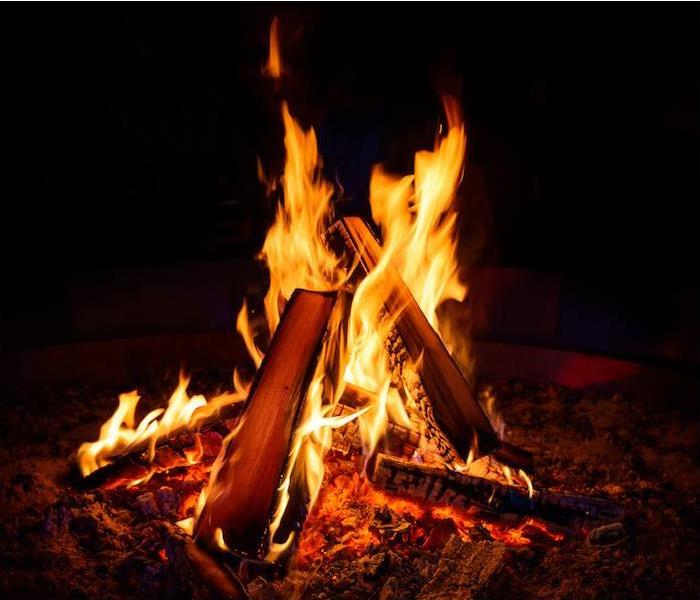 Be mindful about fall fire safety. Always remember that SERVPRO of Fenton/South Ballwin is the trusted leader in the restoration industry.
Be mindful about fall fire safety. Always remember that SERVPRO of Fenton/South Ballwin is the trusted leader in the restoration industry.
It’s autumn again, and it’s easy to tell—temperatures are lower for longer, trees are showing their loveliest colors and the Tigers are back on the field on Saturdays. Pumpkin arrangements are popping up at the local market, and you might even be shopping for Halloween costumes already.
But some of our favorite fall activities can present fire hazards if we’re not careful—so let’s review some of the most common.
Campfire Safety
Fall is the perfect time for a weekend on the campground, but it’s crucial that you know how to build and finish your campfire properly.
Make sure any open flame is at least 25 feet from tents or structures of any kind, and use a pre-built pit if one is available. Never accelerate your fire with kerosene or lighter fluid—stick to the slower but safer method of igniting kindling with a match or lighter.
Embers can stay hot and reignite for a very long time, so make absolutely sure that your ash pile is cool to the touch before you break camp, dousing every last ember with water.
Leaf Burning
If leaves are falling and piling up, you could have them hauled away, or you could, as some residents do, create a burn pile and get rid of them the old fashioned way. First you’ll need a permit from the Fenton Fire District, then you’ll want to let your local fire station know you’ll be hosting an open flame.
Don’t burn anything besides organic yard waste like leaves, trimmings and small limbs—building materials or garbage are both dangerous and illegal to burn.
Use a metal barrel to burn your trimmings if you have one—if not, make sure you’re 50 feet from your house or any buildings, and out from under any low-hanging tree limbs that could ignite. A dirt area is best as well, because there’s less likelihood of any fire spreading with no grass for it to consume.
Halloween
Decorating for fall and Halloween are favorite pastimes for many, but always respect the danger of live candles, especially if any decorations are hanging—those cobwebs are especially prone to catch fire. And if you hang any lights for outdoor parties, be sure to unplug them when not in use, and avoid extension cords if possible.
If a fire hazard should turn from potential to reality in your home, remember the trusted leader in the recovery industry and contact SERVPRO to get your property fully restored right down to the smell of smoke.
What's Causing Home Fires?
11/12/2021 (Permalink)
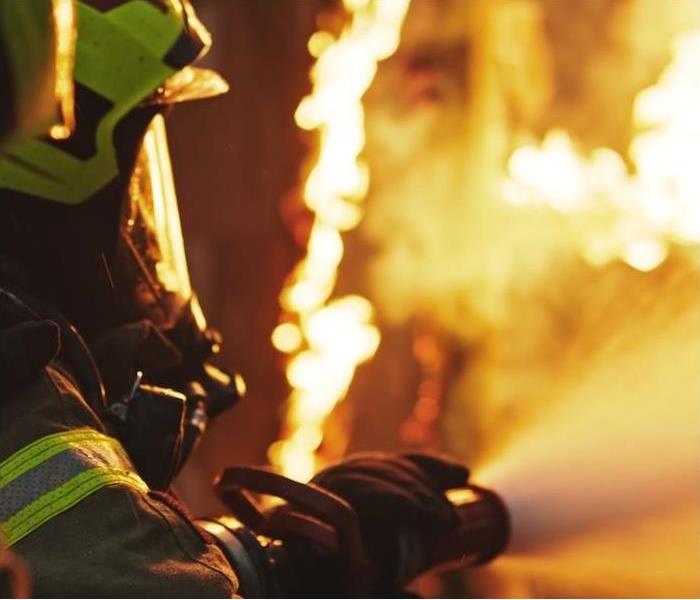 Regardless of the cause, SERVPRO of Fenton/South Ballwin are here for you if your home is affected by fire.
Regardless of the cause, SERVPRO of Fenton/South Ballwin are here for you if your home is affected by fire.
Fires at home are still a problem, despite years, nay decades, of constant education, advances in technology and regular ad campaigns to try and help us put them to an end. You’d think with so much invested in our homes, and their centrality in our daily lives, we’d be doing more to protect them.
Yet somehow a quarter of all reported fires, and more than 75% of all civilian fire fatalities happen in the home.
How can it be that one out of every four fires starts at home? Let’s look at what’s causing these fires, and the specific things making them spark.
Cooking. This is by far the leading cause of home fires and injuries (but interestingly, not fatalities). Some 49% of all home fires start in the kitchen, and the No. 1 reason is unattended cooking. That’s right, the single best thing you can do to avoid a fire at home? Pay attention while you cook.
Heating equipment. Approximately 14% of all house fires in the U.S. begin with heaters. Portable space heaters lead the charge, aided by equipment malfunctions and fires that start because clothing or furniture are left too close to heating elements.
Electrical fires. Modern homes use a lot of electricity, and some older homes don’t have wiring systems equipped to handle it. This leads to short circuits and overloads. Other causes include excess use of extension cords, over-powering lighting elements, faulty wiring, loose outlets and more.
Intentional fires. It’s hard to imagine, but there are some 28,000 intentional home fires each year in the United States. These are fires that began with the intention of burning something, not simply fires set for some other reason that got out of hand.
Smoking materials. Anytime you’re dealing with hot ash or combustible materials indoors, you run the risk of fire. Cigarettes and smoking paraphernalia are often left burning as individuals fall asleep, leading to 5% of home fires, and sadly, almost a quarter of all civilian home fire casualties.
Regardless of the cause, SERVPRO is here for you if your home is affected by fire. Contact your local team today to see how we can help.
Smoke Odor After a Fire
9/29/2020 (Permalink)
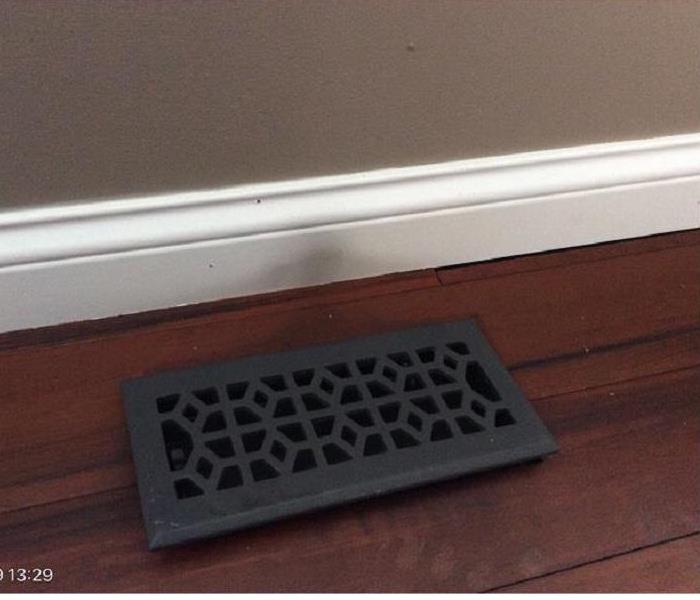 Fire Damage in Ballwin, MO
Fire Damage in Ballwin, MO
Removing smoke odor after a fire is a difficult task. To achieve complete smoke smell removal, the remediation process must include specialized equipment and techniques that only a professional restoration company can provide. Thus, we do not advise homeowners to tackle this task themselves. Check out the steps involved in smoke damage restoration below.
The types of smoke odor
Smoke results from incomplete combustion and consists of persistent particles (soot), oils, and gases. The pungent smoke odor comes from volatile molecules that materials release when burning.
Smoke odor can result from burning protein (meat), natural materials (wood, cotton, etc.), synthetic materials (e.g., plastic, nylon) and more. With so many substances that can burn, the restoration process requires technical knowledge and complex procedures.
How to remove smoke smell from properties
Removing the source of the problem
The first and most important step in smoke odor removal is to remove the source of the odor(s). This involves removing burnt items, such as cabinets, furniture, drywall, and non-salvageable contents. The items can be either discarded or restored, depending on their condition.
Cleaning the salvageable contents
Our trained technicians clean the salvageable items with appropriate products.
Cleaning the air ducts
Smoke, soot, and odors from a fire will penetrate the duct system and any dust or other particles inside of that system. Thus, cleaning the ducts early in the smoke smell removal process is essential to preventing the HVAC system from re-contaminating areas that have been cleaned.
Removing the smoke smell
The final stage is removing the lingering airborne odor. To accomplish this task, a variety of techniques that can be utilized, but they all share a common goal — complete smoke odor removal. Here are some examples of proven systems:
- AIR SCRUBBING. A technician will use a high-efficiency particulate arrestor (HEPA) air scrubber which can remove 99.97% of particulates from the air. Removing these airborne particulates removes additional source materials for odors.
- THERMAL FOGGING. Fogging uses a petroleum-based deodorizer emitted via a thermal fogging unit. It fills the affected area with a mist-like deodorizer. Fogging counteracts odorous molecules by using fragrance modification for permanent odor neutralization. Prior to fogging, technicians put out all flames. Everyone in the treatment area must wear respiratory protection equipment or leave the area.
- OZONE GENERATION. This is one of the most popular and familiar processes for removing airborne smoke odor molecules, including hard-to-neutralize protein smoke. Ozone is a powerful oxidizer that neutralizes odorous molecules by releasing additional oxygen into the air. Ozone, while an effective odor remover, is not an “air purifier.” Customers should not be present when an ozone generator is in operation. Personnel should enter the treatment area only briefly to turn the ozone generator on or off. Ozone works best in a controlled environment, such as an ozone chamber. In there, odorous contents can be subjected to 24 to 48 hours of ozone gas.
SERVPRO of Fenton/South Ballwin is available to answer all your questions if your home or business has been affected by a fire damage.
Fire Safety Education
5/28/2020 (Permalink)
You may know what to do during a fire, but do your children? SERVPRO of Fenton/South Ballwin has faced countless losses in homes and businesses due to fire damage so we want families to be prepared. It is important to make sure your children are educated on fire safety. You never want to leave your children home alone without the proper fire safety education and since you can't predict a fire emergency, fire safety education is key. Here are some important items to remember:
Make sure that you educate your children on what a smoke alarm looks and sounds like. Make sure they can recognize when a fire alarm has gone off and what to do when an alarm has sound. Know two or more routes to exit your home during a fire as well as a meeting point away from the location a safe distance from the fire. The American Red Cross suggests "Practice your fire escape plan at least twice a year and at different times of the day. Practice waking up to smoke alarms, low crawling, and meeting outside." It is crucial your children also know how to dial 9-1-1.
When making sure your home is up to fire safety standards, make sure to have escape ladders on the upper levels so that you can escape from windows to safety. The American Red Cross also suggests "use quick-release devices on barred windows and doors. Security bars without release devices can trap you in a deadly fire. If you have security bars on your windows, be sure one window in each sleeping room has a release device." It is important to make your children aware of which windows have quick releases on them and how to use them properly. Also have fire extinguishers readily available, and up-to-date and, at minimum, in the kitchen, garage and on the upper levels.
It is never too soon to start teaching your children how to be prepared during an emergency, including fires, as they often occur in the home. SERVPRO of Fenton/South Ballwin is open 24/7 in case a disaster strikes. We are dedicated to helping restore your residence to pre-disaster conditions, making it “Like it never even happened.” 636-527-5990
Fire Safety
4/16/2020 (Permalink)
Fires can be the most devastating acts of nature or unpredictable accidents, but several types of fires can be avoidable. Fires within our homes and businesses can be reduced simply by following a few safety practices.
Some friendly fire reminders include keeping matches and lighters out of reach, smoking outside, and watching your cooking. It is important to stay in the kitchen when you are grilling, frying, or broiling food. It is also important to be careful when using candles, remember to inspect your electrical cords, and to give space heaters space. It is recommended to keep space heaters at least three feet from anything that can burn. Finally, protect and prepare yourself, your family, and your colleagues!
Depending on the building structure you should install smoke alarms and sprinklers. It is important that both smoke alarms and sprinkler systems be tested or checked on a regular basis!
Rather these tips help or not, having a fire escape plan is the most important safety practice. Plan, know where you are going if a fire should occur, practice your procedure with your family/coworkers, and talk about it often. Bottom line…. Stay safe and remember that SERVPRO of Fenton/South Ballwin is here to help! (636)527-5990
Protein Fires
1/17/2020 (Permalink)
Protein fires result in smoke damage from the burning of any protein enriched fibres, most commonly due to neglectful cooking. Unlike any other structure fire where there is lots of visible smoke from fast-burning materials, the low temperature of cooking food (in comparison to the high temperature of structure fires) reduces the animal fat and protein to a fine mist. This specific type of fire does not appear to produce much smoke or cause significant visible damage to your property, but the ‘mist’ it produces will cover your entire home or business in an invisible, sticky, foul smelling residue. This residue can penetrate your range hood, cabinets, ducts, closets, textiles, ceiling tiles, insulation, the paint on your walls, and any other porous surface in your home or business.
The techniques necessary for restoring your home and belongings after a protein fire are unique and require special expertise that only professionally trained technicians are knowledgeable about. Everyday household cleaners will not remove the residue – this includes anything from floor cleaners and bleach to dish soap and laundry detergent. Every inch of your home and every piece of contents that is affected needs to be treated with specialized products.
SERVPRO of Fenton/South Ballwin uses specialized products and application techniques that will be implemented in stages to ensure the pores and fibers throughout your home or business are thoroughly cleaned. This process is spread over multiple days. One application of one product may be enough to restore a bathroom cabinet down the hall from your kitchen, but the cabinets directly above your stove may require removal or several applications of two or three different products for more intensive odor control. It all depends on the type of food that was burnt, how long it burned for, the temperature it burned at, and the layout and type of materials in your home or business.
If you experience a protein fire, your best chance at fully restoring your home or business is a call to SERVPRO of Fenton/South Ballwin. We are always here to help!!!
HVAC Systems: Affected by a Fire
7/15/2019 (Permalink)
HVAC systems condition the air within occupied interior spaces. They ventilate and supply warm or cool air through an air conveyance systems referred to as ductwork. HVAC systems typically have a cold side, or return air, and a hot side, the supply air. An air filter system is normally strategically located on the return side, somewhere before the blower motor compartment. Most air filters are engineered to capture smaller airborne contaminants in order to protect the blower compartment components.
Although HVAC systems all have the same purpose, they vary greatly in design. Soot and smoke odor removal is relatively easy in some types, especially metal ducts. However, following a structural fire, soot contaminates coat most interior fiberglass surfaces. Fiberglass duct insulation is easily contaminated due to the volume of air spaces within the insulation matting. When ducting becomes exposed to smoke odor gases and particulates, PICs penetrate deep within the fiberglass fibers used to insulate the ducting. An HVAC system that was operating during a fire will certainly be more heavily contaminated than one that was turned off; however, systems become contaminated even when they were not operating during the fire.
An inspection of the HVAC system will determine when the complete system requires cleaning. In heavy soot contamination situations, restorable mechanical components within the HVAC system should be disassembled, cleaned and deodorized in accordance with published NADCA standards. NADCA stand for National Air Duct Cleaners Association.
Water Damage following a Fire
5/20/2019 (Permalink)
After a secure building by properly completing a board-up, water removal and drying wet surfaces is the next step. Due to the presence of water, fire restoration and water restorations are related. All of the primary and secondary challenges associated with water restoration can be found in a fire restoration project. Examples are degradation of structural components, contents, corrosion of metallic surfaces and microbial growth. An added complication is that waterborne smoke odor may penetrate deeply into porous materials.
In locations where water has been used to extinguish the fire, the water will migrate through the structures and wet building materials. During this process, the water becomes contaminated with innumerable materials. Excess standing water should be extracted thoroughly. Some buildings are so full of water that special pumps are required to remove standing water. Where possible, wet surfaces should be treated with a broad spectrum, government-registered disinfectant to control the growth of microorganisms. All personnel should followed label instructions when using EPA-registered products.
Dehumidification is set-up within the water damaged area(s) depending upon power availability and the type of drying equipment available. A supplemental electrical power source may be necessary in some buildings.
Smoke Odor and Residue Classifications
4/2/2019 (Permalink)
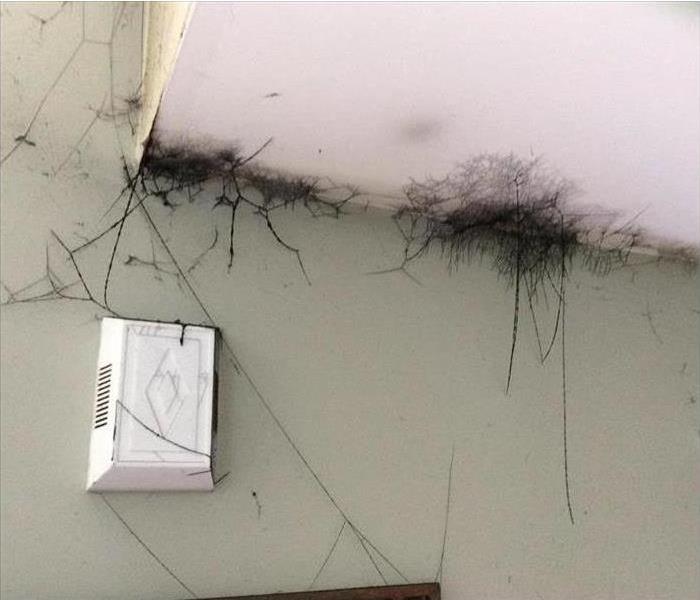 Soot Webs from Residential Fire
Soot Webs from Residential Fire
There are three general types of soot residues typically produced in a fire.
- Protein Residues
- Natural Substance Odor and Residue
- Synthetic Residues
Protein residues result from overcooked or burned meat, fish or beans. The residue color ranges falls somewhere between yellow and brown. The texture is greasy and sticks to most surfaces it comes in contact with. Thorough cleaning with water-based cleaning solutions can effectively clean this type of residue, as long as the target surface is wet cleanable (not damaged by water.)
Natural Substance odor or residue result from burned paper or wood. Campfires, forest fires and wood fireplaces produce natural substance odors. These residues are grey to black and have a dry, powder-like texture. Natural residue can be removed easily with vacuums and other dry preconditioning techniques, followed by wet cleaning techniques. Natural substance residues are easier to clean and deodorized compared to protein and synthetic types.
Synthetic residues result where the burned material is oil based. Carpets, upholstery, window shades and draperies, furniture and toys are typically constructed with synthetic materials. All synthetic materials produce a thick, heavy black smeary residue when they burn, for example, burned plastics. If the burn residue is left undisturbed on a surface, much of this residue may easily be vacuumed away. On the other hand, touching the residue will smear it into a surface creating more work ahead for the Project Manager. Fires involving synthetic materials will often leave behind ornate soot-covered webs, sometimes called smoke webs, tags or streamers.
Personal Protective Equipment (PPE) for fires
3/30/2019 (Permalink)
The preferred safety strategy is to establish engineering controls, which control the work environment so as to reduce employee exposure to the hazards of fire damage. For example, when working in areas containing loose soot residue, it is highly recommended that Project Managers and Technicians use appropriate air quality controls, such as exhaust fans and HEPA air scrubbers.
Workers should also be equipped with personal protective equipment (PPE) as a last line of defense after engineering controls have been utilized. The type of PPE you use is dependent on the exposures they will encounter, and the level of protection is based on risks identified in the initial hazard inspection and risk assessment.
PPE are safety devices and clothing that ensure the basic health protection and safety of users. PPE is any device or garment worn by an individual to prevent exposure to one or safety and health hazards. PPE includes all clothing and other work accessories designed to create a barrier against or restraints from workplace hazards following a fire. For example:
- Chemical resistant gloves
- Slash goggles or goggles with a vapor seal
- Appropriate respirator
- Hard Hat
- Work boots
- Protective clothing
In addition to PPE are personal protective technologies and devices that provide a worker with early warning of a hazard or otherwise help keep the Project Manager safe from harm. Such technologies include sensors that detect toxic atmospheres and communication devices used for safe deployment of emergency workers.
Using PPE requires hazard awareness and training on the part of the user. Our employees must be aware that the equipment does not eliminate the hazard; if the equipment fails, exposure will occur. To reduce the possibility of failure, equipment must be properly fitted and maintained in a clean and serviceable condition.
Testing for Smoke Residue
3/30/2019 (Permalink)
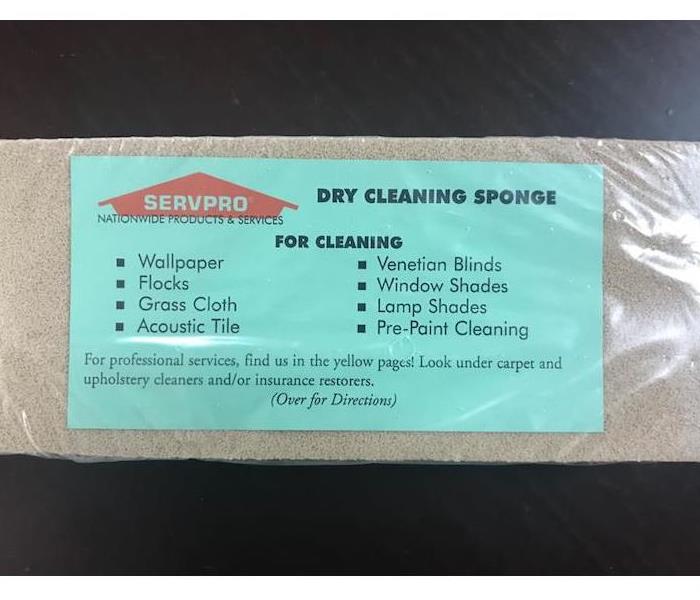 Dry Sponge used for testing for smoke residue.
Dry Sponge used for testing for smoke residue.
In areas where visual signs are not evident but smoke odors still exist, it will be necessary to test for smoke. It is the adjoining and more distant areas such as spaces inside wall cavities, and in basement, attics, and walk-in closets, where a methodical inspection is necessary. Smoke deposits will likely be found in and on the following areas:
- Cold surfaces
- Outside walls of the structure
- Glass surfaces
- Metallic surfaces
- Horizontal surfaces
- Surfaces that carry state charges, such as plastic garment bags
- HVAC system filters
- Inside HVAC system ducting
Soot and odor are evaluated as levels of contamination ranging from light to heavy. These levels are determined based on the experience of the Project Manager and his or her observations during testing. Testing provides positive proof and valid documentation that smoke contamination does in fact exist. Insurance companies need this documentation from our Project Managers in order to extend the scope of work necessary to properly clean up after a fire.
Initially the Project Manger collects "swipe tests" of all the surfaces listed above. Cosmetic wedges, dry sponges or white facial tissues work well for sample collection. Occasionally the customer and/or adjuster may ask if a particular damaged item or surface can be restored. When this occurs we first test the item before making an appropriate decision.
Heating Fire Safety
1/18/2019 (Permalink)
Heating equipment is a leading cause of fires in U.S. homes. Local fire departments responded to an estimated average of 52,050 fires involving heating equipment each year in 2012-2016. These fires resulted in annual losses of 490 civilian deaths, 1,400 civilian injuries, and $1 billion in direct property damage. The homes include one- and two-family homes (including manufactured homes) and apartments (including townhouses and other multi-family dwellings). Space heaters are the type of heating equipment most often involved in home heating fires, figuring in two of every five of these fires and accounting for 86% of associated civilian deaths, 78% of civilian injuries, and 54% of direct property damage.
- Heating equipment fires accounted for 15% of all reported home fires in 2012-2016 (second behind cooking) and 19% of home fire deaths.
- The leading factor contributing to home heating fires (27%) was failure to clean, principally from solid-fueled heating equipment, primarily chimneys.
- The leading factor contributing to ignition for home heating fire deaths (54%) was heating equipment too close to things that can burn, such as upholstered furniture, clothing, mattress, or bedding.
- Most home heating fire deaths (86%) involved stationary or portable space heaters.
- Nearly half (48%) of all home heating fires occurred in December, January and February.
Here at SERVPRO of Fenton/South Ballwin we want you to be safe this winter. If you sustain any damages due to any heating source we are here to help 24/7/365 at (636) 527-5990.
Dryer Fire Prevention Tips in West Kirkwood and Sunset Hills
7/17/2018 (Permalink)
Did you know that failure to clean the dryer (34 percent) is the leading cause of home clothes dryer fires?! Most of clothes dryer fireshappen in the fall and winter months, than in spring and summer, because of all the bulky clothing you are drying.
Some tips to help prevent dryer fires are: 1. Clean out the dryer vent every time you dry a new set of clothes. 2. Don't add as much clothes to the dryer s you would in the spring or summer. 3. Keep area around the dryer free of flammable items. Clothes drying fires account fro 92 percent of all fires. For more safety tips and prevention checkout: https://www.nfpa.org/Public-Education/By-topic/Safety-in-the-home/Dryers-and-washing-machines
If your Fenton and South Ballwin home or business has been affected by a clothes dryer fire give SERVPRO a call at 636-527-5990 and we'll make it "Like it never even happened."
Smoke and Soot Clean Up
5/22/2018 (Permalink)
Smoke and soot are very invasive and can penetrate various cavities within your home, causing hidden damage and odor. Our smoke damage expertise and experience at SERVPRO allows us to inspect and accurately assess the extent of the damage to develop a comprehensive plan of action.
Smoke and soot facts:
- Hot smoke migrates to cooler areas and upper levels of a structure.
- Smoke flows around plumbing systems, seeping through the holes used by pipes to go from floor to floor.
- The type of smoke may greatly affect the restoration process.
Different Types of Smoke
There are two different types of smoke–wet and dry. As a result, there are different types of soot residue after a fire. Before restoration begins, SERVPRO of Fenton and South Ballwin will test the soot to determine which type of smoke damage occurred. Then the cleaning procedures will be based on the information identified during pretesting. Here is some additional information:
Wet Smoke – Plastic and Rubber
This creates low heat, smoldering, pungent odor, sticky, and smeary. Smoke webs are much more difficult to clean.
Dry Smoke - Paper and Wood
Fast burning, high temperatures, heat rises therefore smoke rises.
Protein Fire Residue – Produced by evaporation of material rather than from a fire
Virtually invisible, discolors paints and varnishes, extreme pungent odor.
Our Fire Damage Restoration Services
Since each smoke and fire damage situation is a little different, each one requires a unique solution tailored for the specific conditions. Here at SERVPRO of Fenton an South Ballwin we have the equipment, expertise, and experience to restore your fire and smoke damage. We will also treat your family with empathy and respect and your property with care.
Do's And Don's After A Fire
3/26/2017 (Permalink)
Most people think that they can clean up the mess after a fire occurs. In fact cleaning yourself without the proper tools can actually make matter worse. SERVPRO of Fenton and South Ballwin has all the tools to help you get your home or business "Like it never even happened." Down below are the do's and don't's after a fire. Following these do's and don't's will help restore your valuables as best as possible
What to Do After a Fire
Limit movement in the home to prevent soot particles from being embedded into upholstery and carpets.
Keep hands clean so as not to further soil upholstery, walls and woodwork.
Place clean towels or old linens on rugs, upholstery and carpet traffic areas.
If electricity is off, empty freezer and refrigerator and prop doors open.
Clean and protect chrome with light coating of petroleum jelly or oil.
Wash houseplants on both sides of leaves.
Change HVAC filter.
Tape double layers of cheesecloth over air registers.
What NOT To Do After a Fire
Don't attempt to wash any walls or painted surfaces or shampoo carpet or upholstery without contacting us.
Don't attempt to clean any electrical appliances that may have been close to fire, heat or water without consulting an authorized repair service.
Don't use any canned or packaged food or beverages that may have been stored near the fire, heat or water.
Don't turn on ceiling fixtures if ceiling is wet. The wiring may be damaged.
Don't send garments to an ordinary dry cleaner. Improper cleaning may set smoke odor. Our crews at SERVPRO of Fenton and South Ballwin have the right knowledge and equipment to clean all of your valuables the right way with out causing damage. For more facts about fire visit our website at http://www.SERVPROfentonsouthballwin.com/fire-smoke-damage-restoration or give us a call at 636-527-5990
 SERVPRO of Fenton/South Ballwin is your trusted choice for fire damage restoration in Fenton and South Ballwin, Missouri
SERVPRO of Fenton/South Ballwin is your trusted choice for fire damage restoration in Fenton and South Ballwin, Missouri




 24/7 Emergency Service
24/7 Emergency Service



